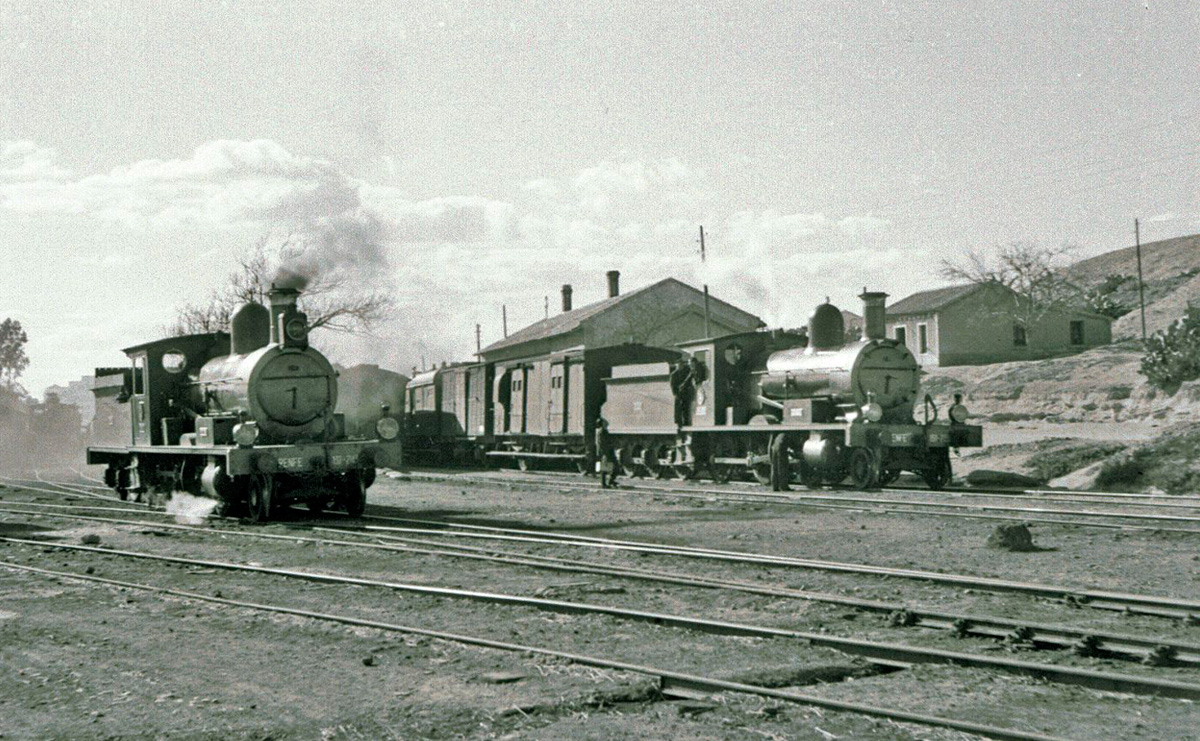Guadix-Almendricos Railway (Baza-Valle del Almanzora) Greenway Nature Trail
History of the Railway

(Wyrsch-Güter, Carlos Diego)
To understand why there was a railway in these lands between Granada and Almería, at the foot of the Sierra de Baza and along the Almanzora River, it is necessary to consider two perspectives: one national and the other more regional.
At the national level, this railway line was the umbilical cord connecting eastern Andalusia and the Mediterranean coast. In Guadix, this railway linked up with the Linares-Almería line, and just a few kilometers north of Guadix was the Moreda station, where it connected with the Granada railway and, by extension, with the rest of Andalusia.
To the east, at the Almendricos station in Murcia, the line continued northward towards Lorca and Alcantarilla, where it connected with the rest of the coastal rail network. However, it is at the regional level where we find the full justification for this railway. The northern slopes of the Sierra de los Filabres hosted an intense mining activity. The iron from Las Menas and Bacares flowed abundantly via cableways to various stations and loading docks, especially near Serón. This mineral was transported to the El Hornillo loading dock in Águilas, where it was shipped to multiple national and international destinations. The entire route between Guadix and Almendricos was built by two companies. The first, financed with British capital, had the unmistakably English name "The Great Southern of Spain Railway" and connected Baza with Lorca and Águilas in 1894.
The section to Guadix was built by the Guadix-Baza Railway, a company linked to the Ferrocarril del Sur de España. This section opened much later, in 1907. Both companies maintained their independence until the creation of Renfe in 1941. Under this public company, the railway continued to support strong mining traffic until the late 1960s, when the mines were closed. On January 1, 1985, along with hundreds of kilometers of other unprofitable Spanish railway lines, it was shut down.

